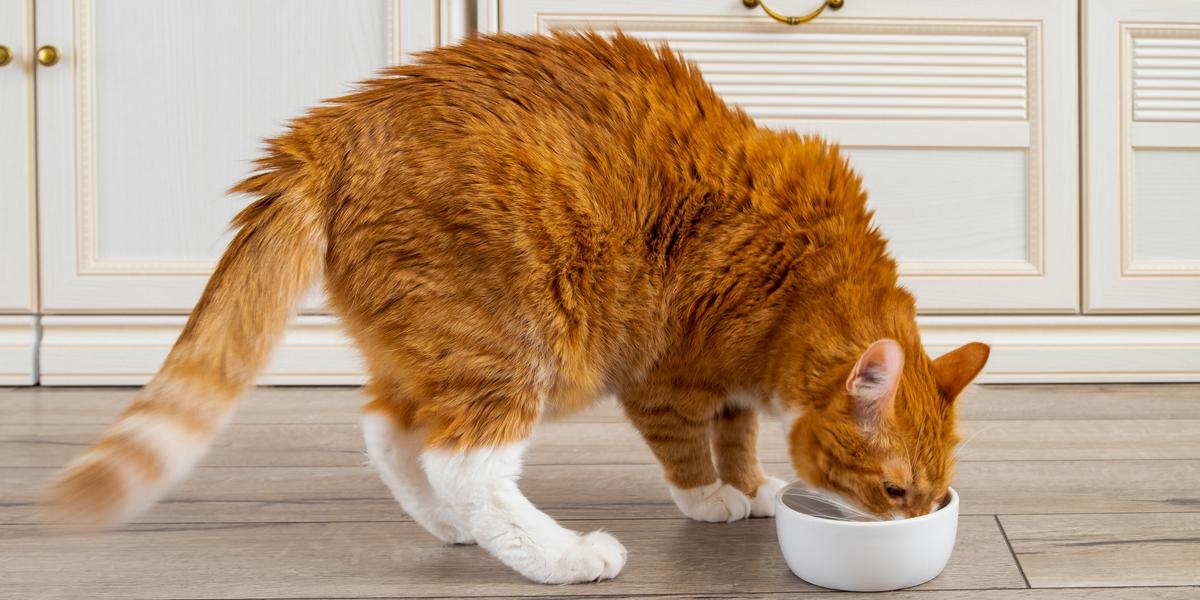
“He’s just fluffy!” is a claim I often encounter as a practicing vet when attempting to start the ‘You need to put your cat on a diet’ discussion.
While it’s true that he may well be endowed with additional hair follicles, the reality of the current obesity epidemic amongst our feline friends is sadly also true.
Over the past two decades, the rates of pet obesity in dogs, cats, and even rabbits have risen dramatically on both sides of the Atlantic.
In fact, the shift has been so complete and insidious that our perception of what the ideal body-weight and shape should be, has also shifted. When provided with an image of an overweight cat, we now routinely consider it to be a perfectly normal and healthy size.
Also Read: Cat Weight Calculator
Thankfully in line with the increasing girth problem, there has also been a rise in research to help us understand and tackle it, plus perhaps even more importantly learn how to prevent it.
Not only do we now have very simple and accessible tools and charts to help us recognize when our pets might need to consider losing weight, but we also have solid knowledge of what the implications of this weight gain are in terms of health and longevity.
We also have a wealth of evidence-based and scientifically formulated foods to help achieve healthy weight loss and to keep it off over the long-term.
Why Should I Worry If My Cat Is Overweight?
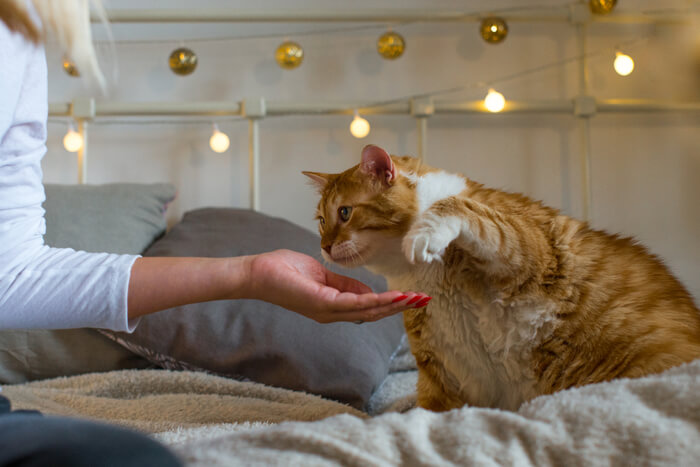
Obesity in cats leads to a variety of serious health consequences, including lower urinary tract disease, arthritis, diabetes, and more.
There is no longer any argument that stands up against the reality that feline obesity is a disease in itself. There is an ever-expanding body of evidence that demonstrates reduced lifespan and reduced quality of life as cats gain weight.
Not only are obese cats at significantly increased risk of developing related conditions such as diabetes, lower urinary tract disease, (cystitis etc.), osteoarthritis and hepatic lipidosis (fatty liver) to name but a few, but they are also unable to perform their normal behaviours such as hunting, climbing and exploring that are essential for a happy cat lifestyle.
What’s The First Thing I Should Do?
So, where do we begin? Well, first things first! Every cat parent should know how to body condition score (BCS) their cat and while that might sound a bit daunting, it’s super simple.
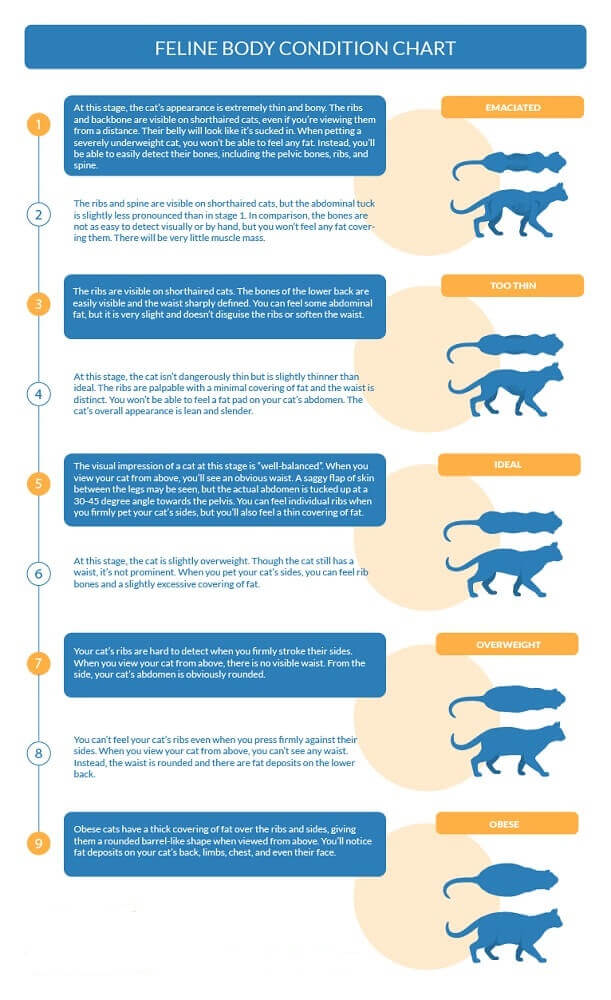
I created a couple of videos a few years back to help with this task and the good news is that the World Small Animal Veterinary Association has endorsed them as part of their Global Nutrition Toolkit.
Essentially, you need to get hands-on with your cat and focus on 3 key areas: ribs, waist, and tummy.
I call it giving them a technical cuddle! The results will identify if your cat is in ideal body condition and at an ideal weight or in need of either losing or gaining some weight.
For prevention, everyone should be conducting this BCS check routinely on their cat and discussing any concerns with their vet. Ultimately, it’s your own vet who will be best placed to provide you with the right guidance and support for your individual cat.
How Much Should I Feed A Cat To Lose Weight?
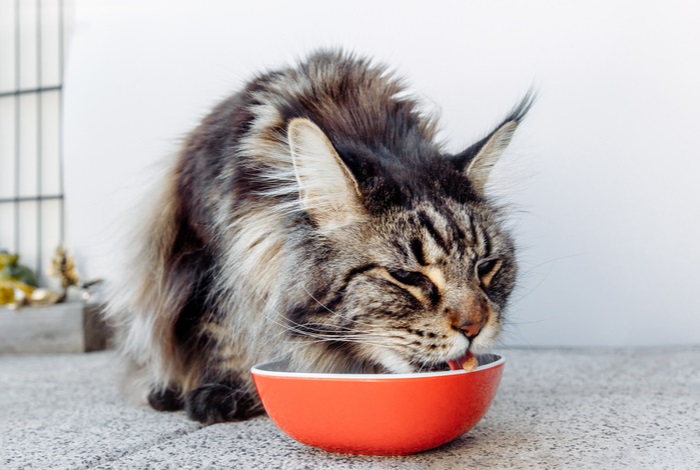
Once you’ve established that your cat needs to lose weight, you’ll have to get them on the right diet.
So, your vet has confirmed that your cat needs to go on a diet, but what now? Walk down the aisle of any supermarket or indeed specialty pet store and the dazzling array of potential foods that proclaim miraculous weight loss cures can be truly bewildering. Don’t be fooled.
While it can be tempting to think that all you need to do is buy a ‘weight control’ product or simply cut down the amount of ‘normal’ cat food that you give, sadly it’s not as simple as just reducing calorie intake.
If you do this you are likely to end up with one of two potential outcomes:
- Your cat won’t lose any weight
- You run the real risk of creating a nutritional deficiency
‘Weight control’ or ‘light’ diets are designed as lower calorie versions of maintenance food, but they are not designed for weight loss.
Each commercial pet food that is sold as a ‘complete’ meal is legally bound to provide all the essential nutrients, vitamins and minerals that your cat requires for healthy growth or maintenance.
If you feed less than the recommended feeding guideline amount stated on the pack, you run the risk of causing a nutrient imbalance that over time could lead to health problems.
That said, it is generally considered ok to feed up to 10% less than the minimum recommended feeding amount as specified on the back of your cat’s food without running into too serious an issue. This is due to the safety limits already formulated in commercial pet foods, but never do this without consulting your vet.
Best Diet Cat Foods
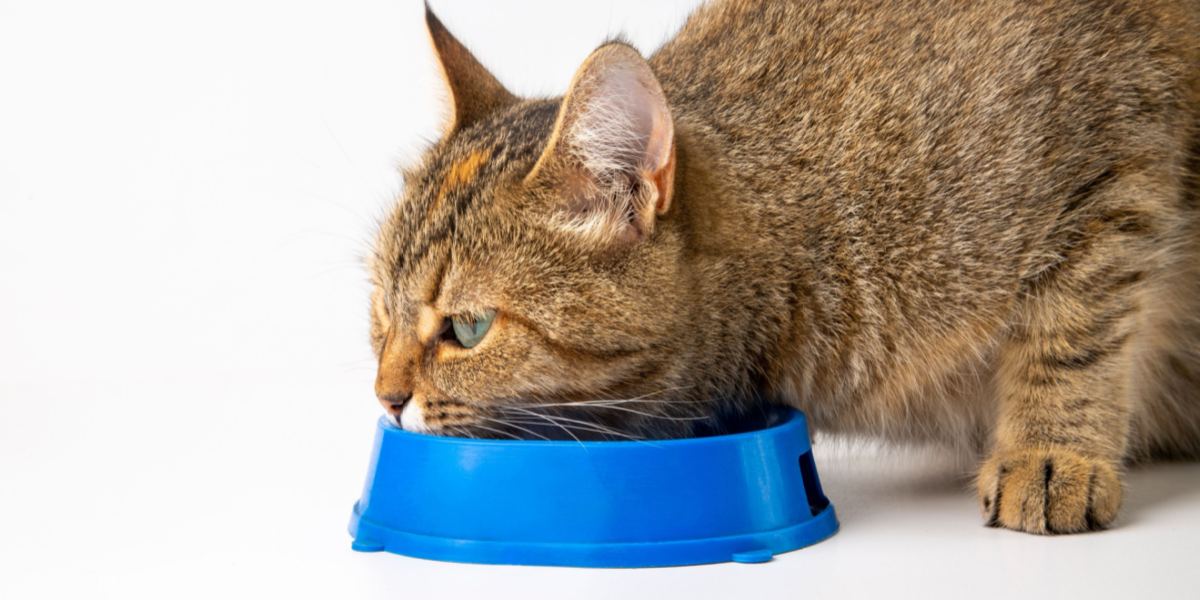
The only true weight loss diets available need to be recommended by your vet. The reason why these products need to be recommended by your vet, is to ensure that your vet team work alongside you to help your cat lose weight in a healthy and sustainable way, without running the risk of developing any nutritional deficiencies or health problems.
Also Read: 8 Best Cat Foods For Overweight Cats
The foods recommended by your vet will be specifically formulated to ensure healthy weight loss, whilst still maintaining sufficient nutrients in the right proportions.
Generally they will have a high level of quality protein to help maintain lean body mass (muscle) while burning fat and they will be low in carbohydrates with added specific ingredients to provide extra benefits such as satiety i.e. ingredients that help your cat feel full even though they are eating less overall calories.
Other functional ingredients that can be found in weight loss diets include pre and probiotics to help maintain a healthy microbiome. Over time, as your cat starts to shed the extra pounds or grams, you can then transition onto a ‘light’ or ‘weight control’ food. This should help them to maintain the weight loss in the long term.
Weight Loss Tips
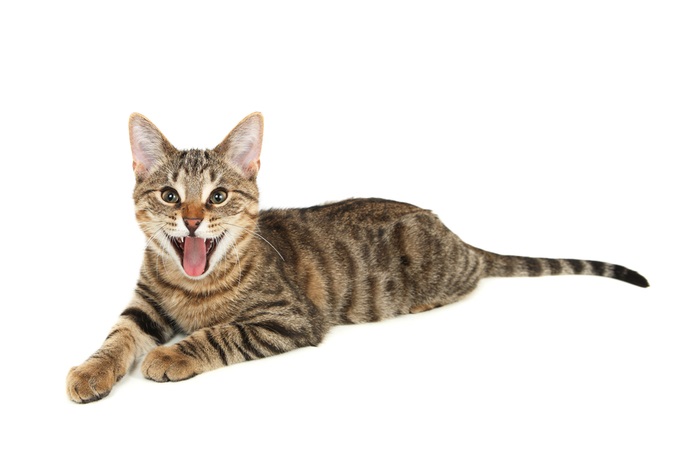
Weight loss involves a combination of tactics to control portions and encourage your cat to exercise.
In 2019 in an effort to tackle the rising obesity issue in cats, International Cat Care (iCatCare) a global organisation of renowned feline experts developed a plan called ‘Five-a-Day Felix’. The premise is simple and aims to reconnect our cats with the habits of their ancestors.
Cats have evolved over a very long time to a diet that is based on small, frequent meals i.e. up to 10 mice a day. Today an increasingly sedentary lifestyle and food presented in highly palatable and energy dense portions has dispensed with the need to expend energy during a hunt.
Also Read: Is It Safe To Feed Your Cat A Vegan Diet?
To help our cats lose weight, we need to re-create a similar environment to that of their wild ancestors and the easiest way to do this is to follow some simple steps:
- Provide a minimum of 5 portions of food throughout every 24-hour period, but don’t offer ad-lib feeding i.e. don’t have food freely available at all times.
- Use puzzle feeders to stimulate both their mental needs as well as their physical needs and provide them with extra incentive to increase their activity levels by playing with them using items such as fishing rod toys, laser pointers, balls and increasing the vertical spaces available.
- Switch up the location of mealtimes and make use of those vertical spaces, but don’t make the switch too dramatic as it could make anxious cats more insecure. Generally, cats feel safe with a familiar routine.
- Feed during the day and during the night. This is where timed puzzle feeders really come into their own!
- Monitor your cats’ body condition and weight, by performing regular body condition scoring and cross-referencing with your vet and vet nurse/vet tech.
- Ensure a constant supply of fresh drinking water is available all the time and consider the use of water fountains and wide glass bowls. Cats generally don’t like their whiskers to touch the sides of the bowl, so always remember to also keep water bowls full to the brim.
- Vary the type of food that you provide in terms of format e.g. wet food, pouches, hydrated, semi-moist, freeze-dried, canned foods, and dry food/kibble types. However, always make sure that it’s a complete diet and consult with your vet to ensure the right proportions of each if you’re mixing it up.
Also Read: The 10 Best Cat Slow Feeders & Puzzle Feeders
Frequently Asked Questions
How can I get my indoor cat to lose weight?
Indoor cats are actually easier to help lose weight than those with access to the great outdoors. This is because outdoor felines are often able to supplement their diet by harnessing their hunting skills or eyeing up the neighbor and pretending that they never get any food! The key to success here is to ensure you accurately weigh each and every portion of food and never go over the maximum amount recommended by your vet. When you pair this approach with increasing exercise levels there’s no excuse not to achieve weight loss.
How can I get my lazy cat to lose weight?
Exercising cats can seem like a daunting task, but the reality of exercise for our cats is what we would consider to be play! Cats love to chase, pounce and run. Even if your cat is lazy, I don’t think I’ve ever come across a cat that can’t be tempted by a fishing rod toy. They’re both physiologically and physically adapted to respond to movement. Even if your cat isn’t used to playing, it won’t take long to teach them. Small twitches of a dangling feather, snippets of laser light along a floor, puzzle feeders and catnip toys can all help to get your cat moving. Not only are your helping them to expend energy alongside their weight loss diet, but you’re also strengthening that all important human-animal bond.
How do you put a cat on a diet when you have multiple cats?
Multi-cat households can present a real challenge when it comes to weight loss! Don’t despair though. If you can establish a routine from when each kitten/cat enters your household you’re in a better position to be successful, even when there’s no weight problem.
If it’s possible to separate your cats and feed the cat that needs to diet in a separate area to the other cats, then this is the ideal solution. However, if you can find a way to feed each cat in a separate location all the time, you’re onto a winner. This may not be possible, but even managing to feed them in different areas of the same room can help.
Puzzle feeders can also provide a good solution. Each cat in a multi-cat household should have their own individual puzzle feeder and ideally invest in microchip linked feeders. These smart feeding bowls will only provide access to food when the cat with the matching microchip comes to the bowl to eat!
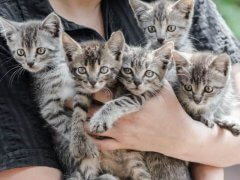

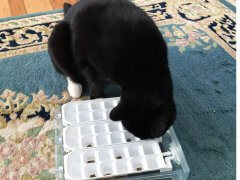
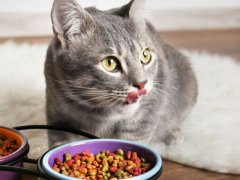
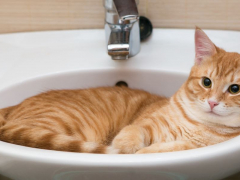
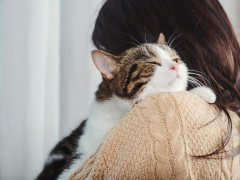
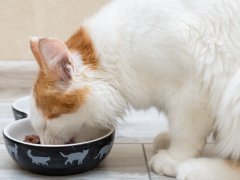
I love this website, it has greater information that is important to know about taking care of our feline friends